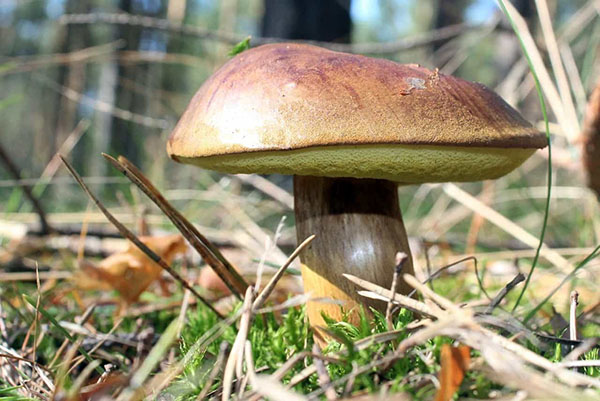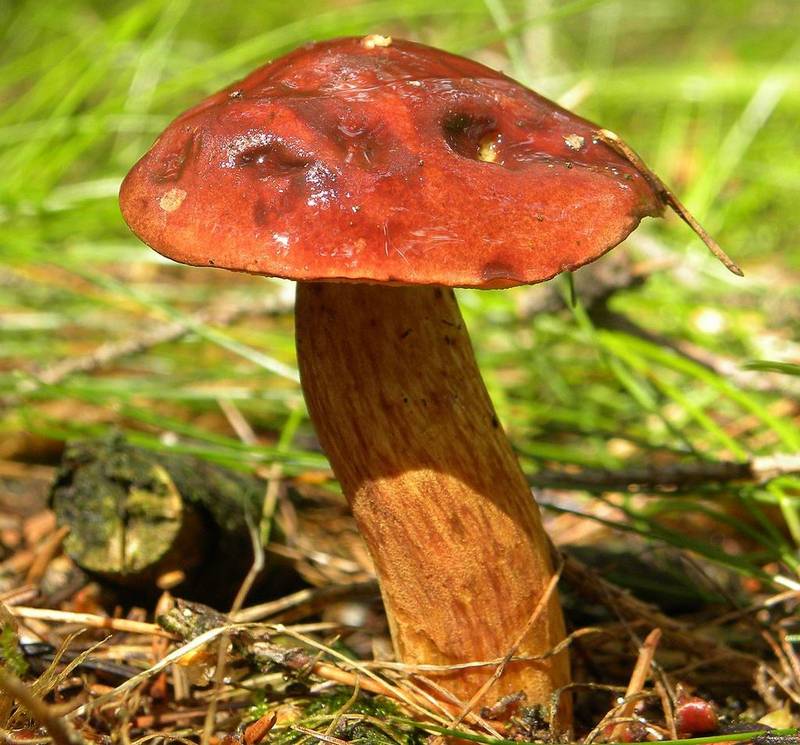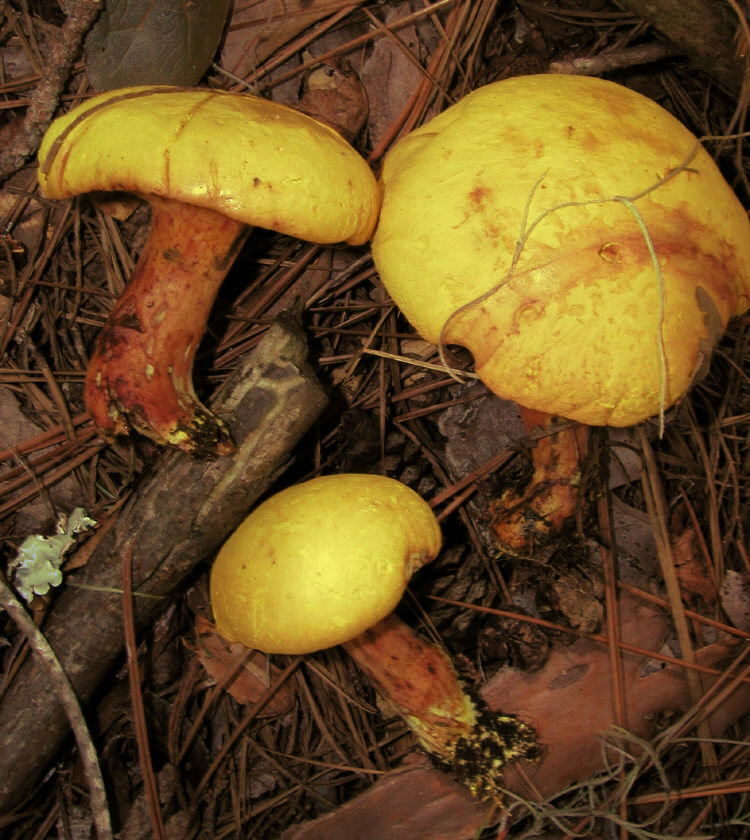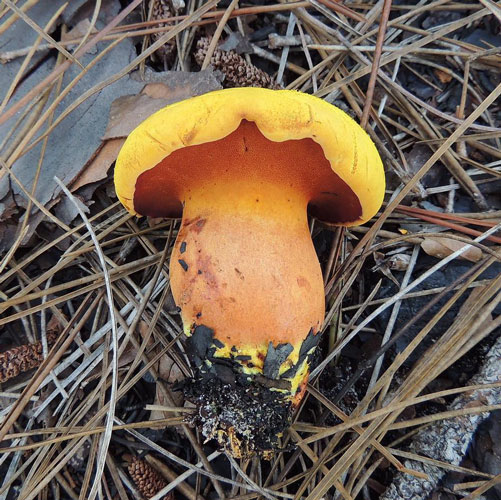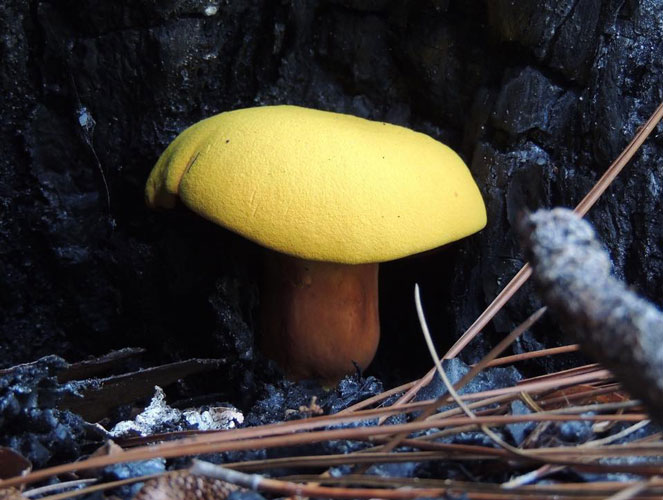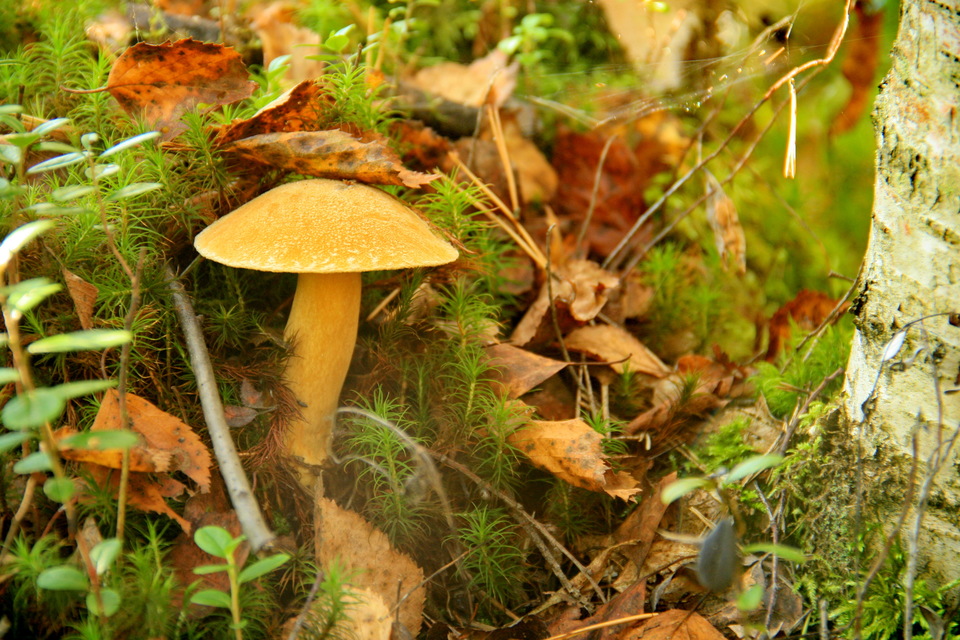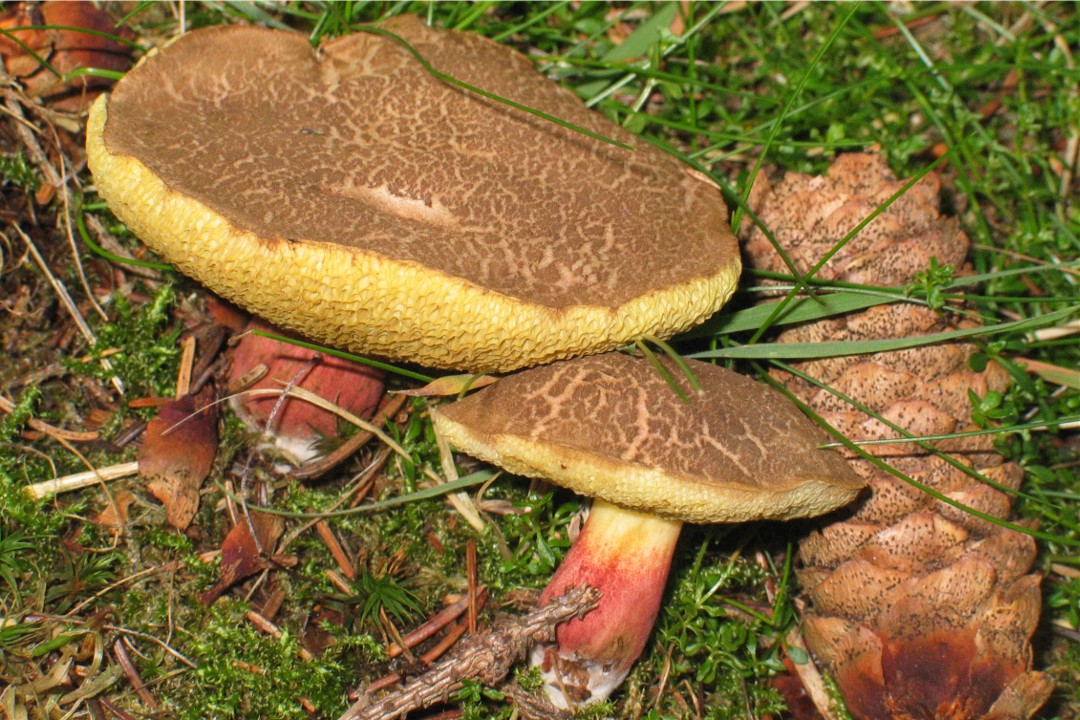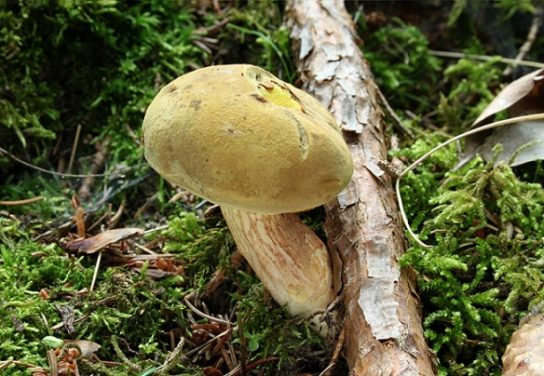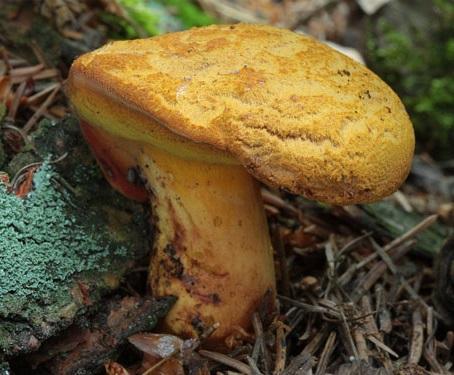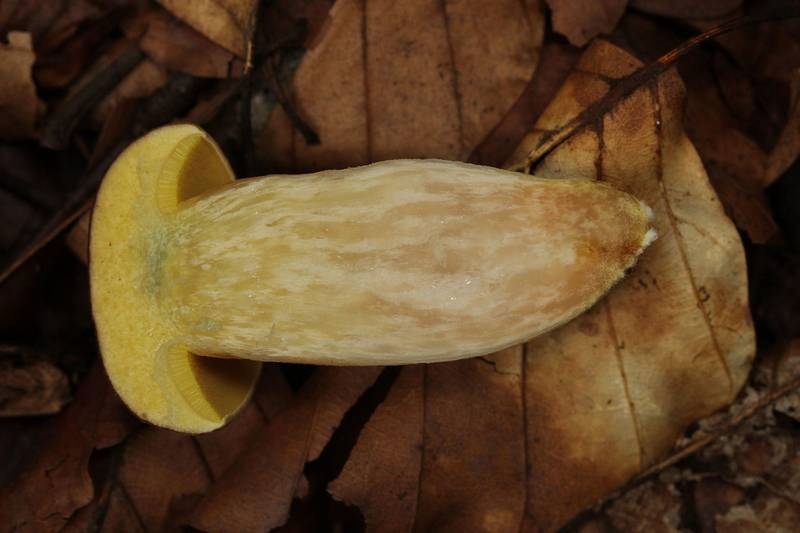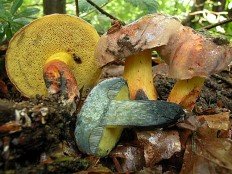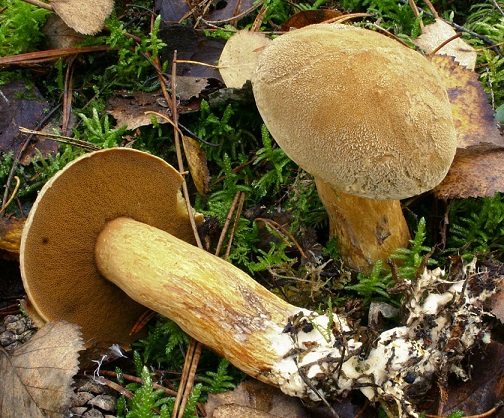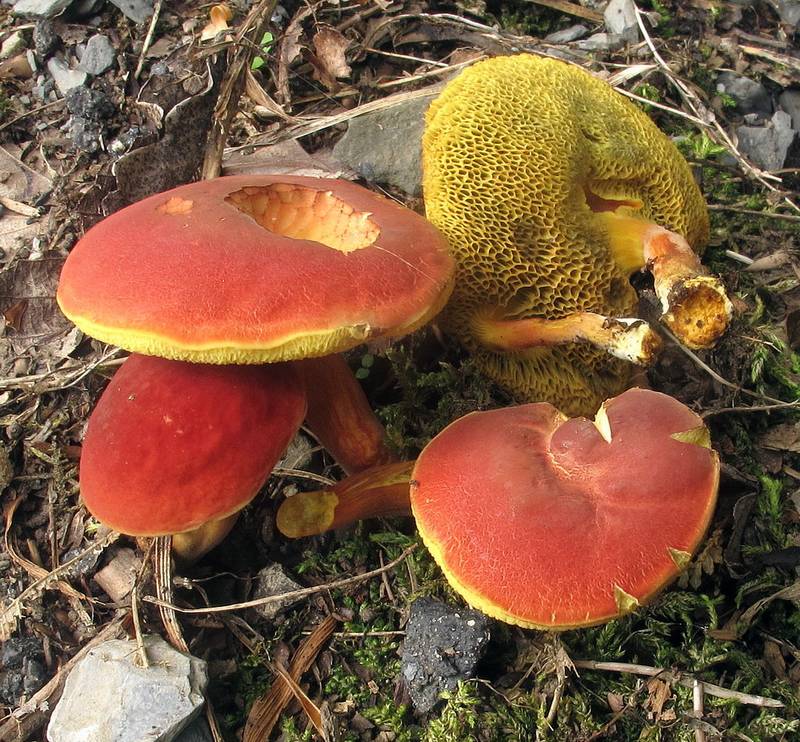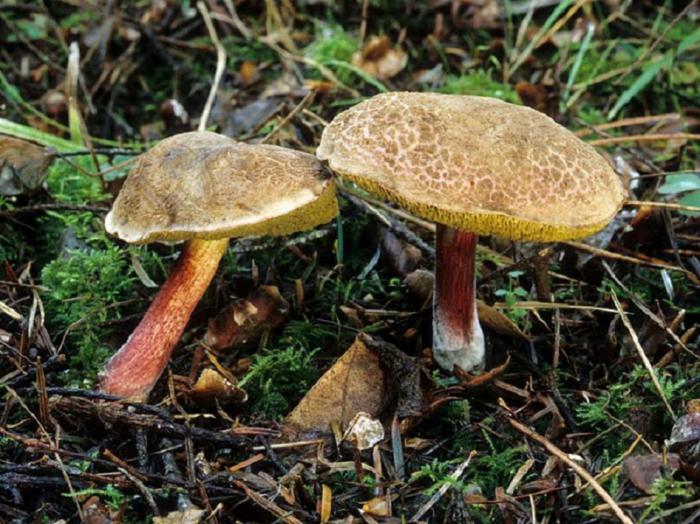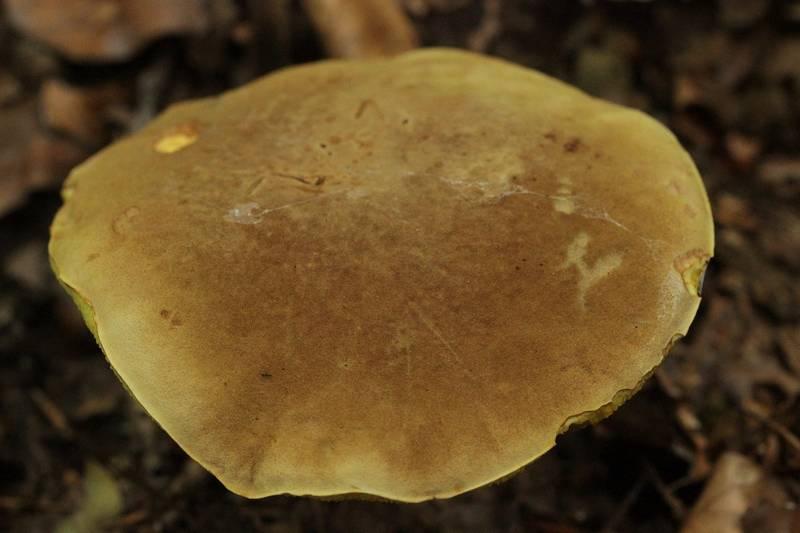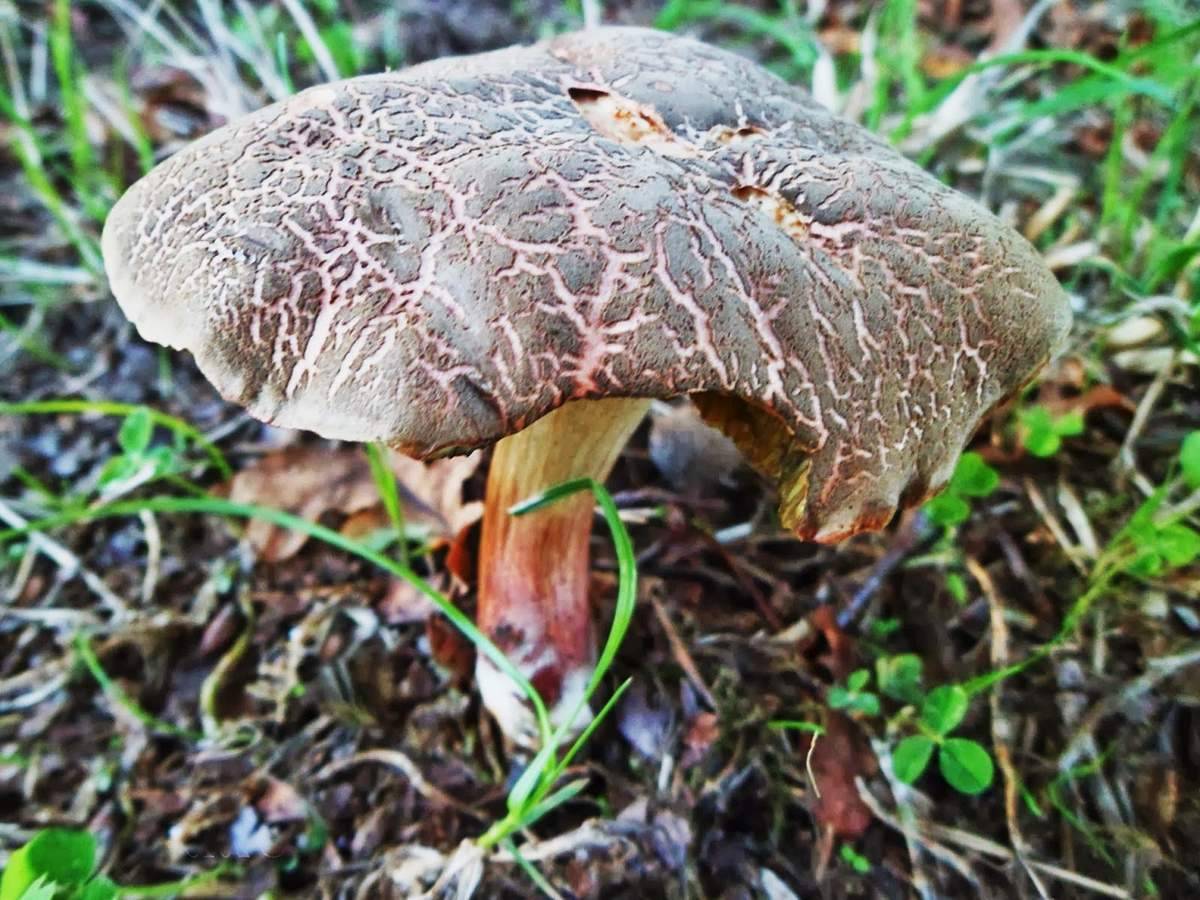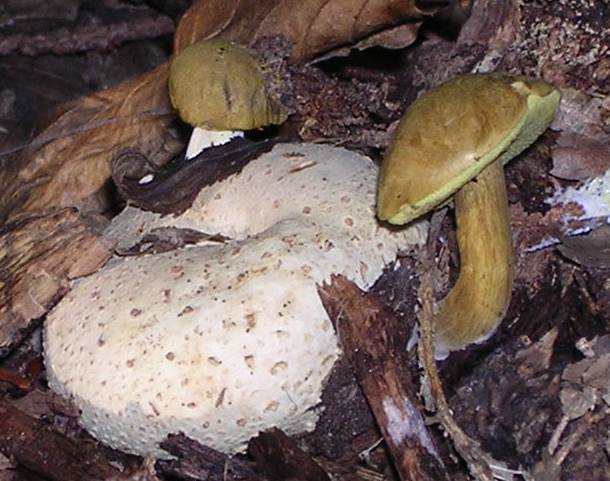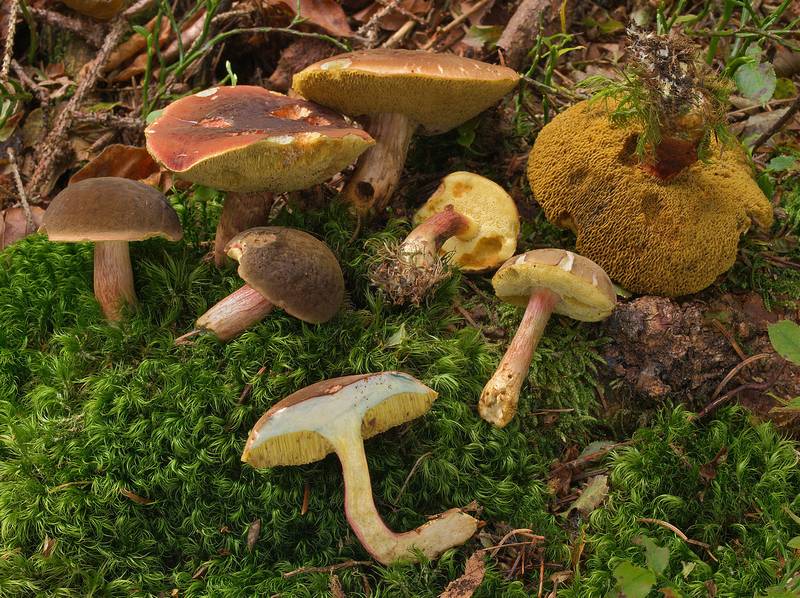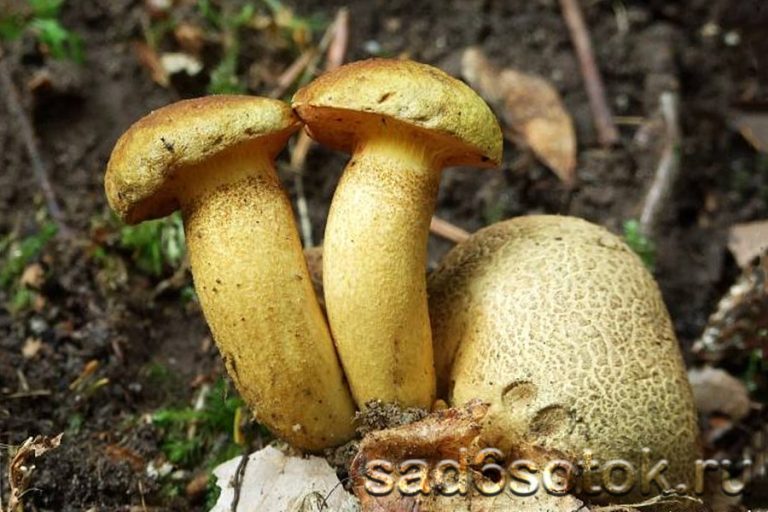How to collect and prepare flywheels?
Flywheels are harvested from mid-summer to mid-autumn. When collecting, you need to cut off only the fruit body, leaving the mycelium in the ground, so that the next year you can get a crop of moss. The collected mushrooms are sorted out, discarding the spoiled and wormy ones. Then they are thoroughly washed and various dishes are prepared from them. If there are a lot of mushrooms, you can store them in the refrigerator for some time, but not more than 2-3 days. It is better to freeze or dry the excess immediately. Before freezing, the mushrooms should be boiled in salted water for a while.
Flywheels can be pickled and salted. They are good because their caps do not need to be peeled off: it is enough to rinse and scrape the damaged areas with a knife. Marinades are prepared on the basis of vinegar with the addition of various ingredients. Boil the mushrooms before pickling. Mushrooms are salted hot and cold. In the first case, garlic is never added and boiled for a short time so that the mushrooms do not creep. Otherwise, the methods of salting mushrooms do not differ from other mushrooms.
Dishes made from mushrooms are very varied. It can be salads, soups, main courses, aspic. Mushrooms can be added to pizza, vegetable caviar, and pie filling. Dried mushrooms are used to add to various sauces. Cooked in any way, these mushrooms taste great.

Photo by: George Chernilevsky, public domain
Description and photo
Due to its incredible taste, this forest gift is very popular among mushroom pickers. Finding a basket of flywheels is a real success. But how to distinguish it from other representatives of the forest kingdom? Of course, for this you need to know what this mushroom looks like.
From Latin - xerocomus subtomentosus.
Hat
The cap of the flywheel is very dense and has a diameter of 4 to 12 cm. In many respects, it depends on the conditions in which the mushroom grows and what its age is. If we talk about color, then it can be called green at a stretch. It usually has a greenish gray or olive surface. Sometimes it is even brown, but this applies to old mushrooms. The shape is slightly convex. If you touch the mushroom from above, then it has a very velvety pleasant hat. However, every touch leaves a small mark and imprint on it.
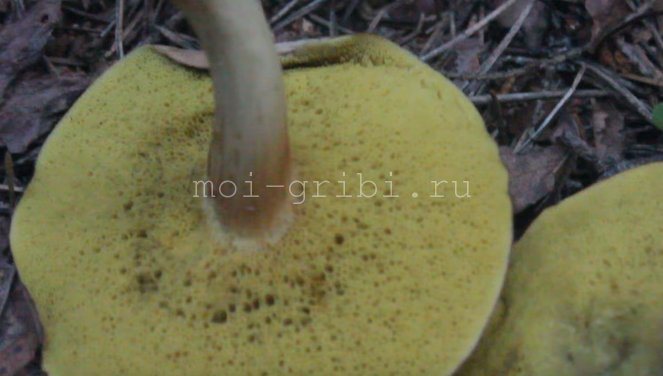
On the cut, the pulp is white and does not lose its hue when interacting with oxygen. Smells very tasty, also dense. There are small white tubes under the cap, from where the spores fall out. The tubular layer is yellow, has a greenish or olive base. If you press hard, then this mushroom will begin to turn blue.
Leg
The stem of the mushroom, on the other hand, has the shape of a cylinder. Stable, and its pulp is no less tasty than the cap. White when cut, turns blue when pressed.
Despite the fact that this fungus is edible, it still sometimes becomes covered with mold, which can be dangerous to humans. However, it can be cleaned off.
Why does the flywheel turn blue? This very much worries the people who collect it. Sometimes, seeing that blue is forming under the imprint, mushroom pickers refuse to collect. In fact, the pulp turns blue due to a special process. However, this is not at all a sign that the mushroom is poisonous. It contains substances that, if damaged, begin to react with oxygen. As a result, the oxidation process begins. It is because of him that the surface darkens. A dark film is formed during oxidation
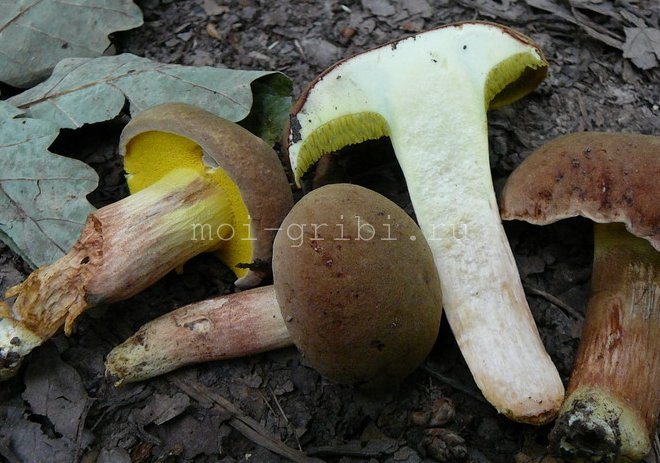
Contraindications and benefits
The flywheel mushroom, as mentioned above, is a very heavy food. Therefore, it is not recommended for people who have serious diseases of the gastrointestinal tract and digestive glands.
It is better to refuse eating for children under the age of 8 years. And also for the elderly.
It is worth noting that despite all the usefulness of mushrooms, they still absorb all harmful substances and heavy metals. Therefore, in no case should the flywheels be collected in places where industrial enterprises, industries, roads or a city are located nearby.

It is better for pregnant women and nursing mothers to refuse to eat them.
What is the use of these mushrooms?
- The flywheel is extremely useful.
- It is delicious, and most importantly, edible.
- He can fight negative diseases, such as cancer.
- In addition, this mushroom is saturated with vitamins, which means it can start the process of raising immunity.
Motley (fissured) and velvet flywheels
The variegated flywheel, or fissured flywheel, is an edible tubular mushroom that grows singly or in small groups from early July to early October. The largest harvest is in August. Found in mixed, deciduous, sometimes coniferous forests.
A mushroom cap with a diameter of about 8-10 cm. The surface is dry, matte, small cracks form an openwork pattern on it. It is colored red or brown with a burgundy or olive tint, with a darker and more saturated color in the middle. In this species of flyworms, the tubular layer is large-pored, adherent, greenish-yellow in color. The stem is rounded, thinner at the base, straight or curved, solid inside, about 5–7 cm high and about 1 cm in diameter. Its surface is flat, dry, dull, yellowish-red.
The flesh in the cap is first fleshy, soft, then loose, stiff in the stem, fibrous, with a pleasant mushroom aroma and taste. Upon contact with air, its yellowish color quickly changes to blue.
The variegated flywheel belongs to the third category of mushrooms. Only the caps of young mushrooms are used for food, which are universal in their culinary qualities and are suitable for preparing a variety of dishes and snacks.
Velvet moss (Boletus prunatus) has a hemispherical cap with a diameter of 4-12 cm, sometimes up to 15 cm. A distinctive feature of the species is a dry matte, velvety-brown cap with lighter edges. The skin on the cap is dry, fine-grained and almost felt, becomes smoother over time, a little slippery after rain.
The leg is cylindrical, 410 cm high, 6-20 mm thick. The stem is usually lighter in color than the cap, often curved, creamy yellow and reddish in color.
Pay attention to the photo - this edible flywheel has a dense, whitish flesh with a yellowish tinge, when pressed slightly turns blue, has a weak mushroom taste and smell:
The tubules in youth are creamy yellowish, later yellow-green. Spores are yellowish.
Variability: The cap becomes dry and velvety over time, and the cap color changes from brown to reddish brown to brownish brown. The color of the stem varies from light brown and yellow-brown to reddish-brown.
There are no poisonous counterparts. According to the description, this mushroom is a flywheel similar to a variegated flywheel. The main difference is that Boletus chtysenteron has cracks on the cap.
Habitat: grows in deciduous, coniferous forests.
Cooking methods: drying, pickling, boiling.
Season: June - October.
Edible: 3rd category.
Next, you will find out what other types of moss mushrooms are.
Cooking recipes

Moss salad
After a “quiet hunt”, a novice mushroom picker has a “problem”: how to cook mushrooms appetizingly, despite their mediocre taste declared in all culinary guides?
The main thing is to remember an important thing - from interaction with air, the mushrooms immediately begin to darken, so fresh peeled mushrooms are immediately immersed in water, adding 2 g of citric acid and a teaspoon of salt to 1 liter. In salted and pickled form, mushrooms are excellent preparations for the winter, but they rarely go for drying - due to the same characteristic darkening
Both hats and legs are used to prepare dishes from moss mills.It is not necessary to pre-boil the flywheels before frying or adding to soups, and the Polish mushroom is eaten raw as the main focus of salads. Incredibly delicious salad "Awesome", although the mushrooms are still pickled for him
In salted and pickled form, mushrooms are excellent preparations for the winter, but they rarely go for drying - because of the same characteristic darkening. Both hats and legs are used to prepare dishes from moss mills. It is not necessary to pre-boil the flywheels before frying or adding to soups, and the Polish mushroom is eaten raw as the main focus of salads. The "Funky" salad is incredibly tasty, although pickled mushrooms are taken for it.
Polish mushroom salad
Main Ingredients:
- mushrooms - 0.5 l jar,
- processed cheese - 100 g,
- boiled potatoes - 5-6 pieces,
- pickled cucumber - 2-3 pieces,
- mayonnaise for dressing,
- greens to taste.
Experienced cooks advise using cucumbers for this salad from a citric acid marinade, and not vinegar. All components of the dish are crushed, mixed and seasoned with mayonnaise, herbs are added at will.
Flywheels for this salad, and for many other dishes, are prepared for the winter as follows:
Pickled flywheels
The mushrooms are cleaned and washed thoroughly, the damaged and too large ones are sorted out, leaving no more than 5-6 cm in circumference with the caps.
Put in a saucepan, pour over water and bring to a boil, then boil for 10-15 minutes over low heat and pour the contents into a colander. Allow the water to drain, and at this time prepare the marinade. 1 tablespoon of salt and sugar is poured onto 1 liter of water, 2 small bay leaves, a few cloves of garlic and just a little cloves are added. After boiling, pour 1 tbsp. a spoonful of vinegar and put mushrooms in a saucepan. Boil in the marinade for 5 minutes, then put it in sterilized glass containers so that the liquid covers all the contents, and roll up.
Soups and stewed or fried side dishes are obtained from mushrooms, and baked in sour cream they can well claim to be an exquisite culinary masterpiece.
Description and characteristics of the mushroom
Red flywheel - lat. names Hortiboletus rubellus, Boletus rubellus, Herocomellus rubellus - refers to the genus of edible tubular mushrooms of the Boletov family. It is a close relative of such noble species as the boletus and boletus.
Its other names: Mokhovik reddening, Bolet Red, Borovik red, Mokhovik reddish, Borovik reddening. People call this mushroom a boletus with a red cap.
Hat
It has a pillow-like shape, its flesh is fleshy. Depending on the place of growth, the color of the cap varies from pinkish cherry to carmine or brownish red. In young mushrooms, it has a more intense color, as it grows it becomes lighter. Its diameter is usually 5-10 cm, sometimes it reaches 12-15 cm.
Hymenophore
The tubular layer under the cap (called the hymenophore) is light yellow in young mushrooms, in mature it acquires a greenish-olive tint. In old flyworms, an uneven pore structure is clearly visible. When pressed with fingers, the hymenophore quickly turns blue. Spore powder greenish brown.

Leg
Its length is 5–8 cm, it is dense, cylindrical, yellow at the top, red at the bottom. With the help of a magnifying glass, you can clearly see that the color of the base of the leg is made up of many grainy crimson dots. Its pulp is tough, fibrous.
Young specimens of Borovik blushing can be confused with Motley Moss. When the mushroom ages and the base of the stem loses its characteristic color, it resembles a Green Mosswheel. But this is not scary, since all the named species are edible.
A bit of history
The first major summary on the mushroom flora of Russia, which included 1132 of these plants, indicating synonyms and locations, was carried out by I.A.Veynman in 1836. At the same time, various flywheels were described and classified.
False flyworms and their photos
Amanita pantherina

Amanita pantherina
With their hats, the mushrooms vaguely resemble the poisonous mushroom Amanita pantherina. It is necessary to carefully consider their reverse side - in the flywheel it is tubular, in the fly agaric it is lamellar, and the outside surface of the cap of the poisonous mushroom is distinguished by small white flakes that easily crumble.
Parasitic flywheel (X. parasiticus)

Parasitic flywheel (X. parasiticus)
It is easy to confuse it with young green mushrooms, if you do not know the conditions for its growth. The parasitic fungus is small in size - a cap up to 5 cm in diameter, lives on the body of a pseudo-raincoat and is extremely rare. In addition, it lacks a characteristic blue discoloration on the cut and an expressionless smell and taste. Although it is considered non-poisonous, no mushroom picker will put it in a basket.
Pepper Mushroom (Chalciporus piperatus)

Pepper Mushroom (Chalciporus piperatus)
A poisonous pepper mushroom (Chalciporus piperatus) looks like a red flywheel, which has a cherry-reddish tint of the leg and tubular layer. On the cut, both the cap and the leg turn pink, in contrast to the moss blue.
Gall mushroom (Tylopilus felleus)

Gall mushroom
They are more often confused with young boletus and boletus mushrooms than with mushrooms, but there is still a chance of getting into the company of mushrooms. Although the gall mushroom is not poisonous, its bitter taste, which appears during heat treatment, will spoil any mushroom dish.
Chestnut Mushroom (Gyroporus castaneus)

Chestnut Mushroom (Gyroporus castaneus)
The variegated flywheel also has an inedible double - a chestnut mushroom, or chestnut gyroporus (Gyroporus castaneus) with the same brownish cap, which changes shades during maturation and becomes covered with a fine mesh of cracks in dry weather. It is distinguished by a hollow brownish leg, does not change color on the cut, which cannot be said about its relative, the blue gyroporus (G. cyanescens), less like a flywheel due to its grayish-brown or brownish-yellow cap. Both mushrooms are inedible and taste very bitter in dishes.
Growing at home and in the country
The flywheel prefers shade and requires a deciduous tree to grow. Best suited:
- Pine;
- beech;
- oak;
- spruce;
- as a last resort, fruity.
Around the selected green tree, remove 30 cm of soil, approximately 1 m wide.Fill the entire space with a specially prepared substrate, consisting of an equal number of the following components:
- forest land;
- branches;
- leaves;
- humus.
You will need to put so much soil to make a mound. To prepare the mycelium, you will need several old mushrooms collected in the forest, which should be soaked for a day in a bucket of clean water. After 24 hours, the mushrooms are kneaded into porridge with your hands and poured onto the prepared bed. It turns out an imitation of forest reproduction.
With the right approach, mycelium will begin to form. The main thing is to water abundantly, especially in the first couple of months. In a year, the results of the efforts will be visible. You can stimulate the growth of the flywheel with abundant and frequent watering.
Pepper flywheel (Chalciporus piperatus)
- Other names for the mushroom:
- Pepper mushroom
- Pepper oil can
Synonyms:
Pepper flywheel (Latin Chalciporus piperatus) is a brown tubular mushroom from the Boletovye family (Latin Boletaceae), in Russian-language literature it often refers to the genus Oily (Latin Suillus), and in modern English-speaking - to the genus Chalciporus.
Hat:
Color from copper-red to dark rusty, rounded-convex shape, 2-6 cm in diameter. The surface is dry, slightly velvety. The pulp is sulfur-yellow, it turns red on the cut. The taste is quite spicy, peppery. The smell is weak.
Spore-bearing layer:
Tubules descending along the stem, the color of the cap or darker, with uneven wide pores, when touched, quickly acquire a dirty brown color.
Spore powder:
Yellow-brown.
Leg:
Length 4-8 cm, thickness 1-1.5 cm, cylindrical, solid, often curved, sometimes narrowed to the bottom, the same color with the cap, yellowish in the lower part. There is no ring.
Spreading:
Pepper flywheel is common in dry coniferous forests, occurs quite often, but as a rule, not too abundantly, from July to late autumn. It can also form mycorrhiza with deciduous species, for example, with young birches.
Similar species:
Chalciporus piperatus can be confused with various representatives of the genus Suillus (in other words, with boletus). Pepper Mokhovik differs from buttermilk, firstly, by its radical taste, secondly - by the red color of the spore-bearing layer (in buttermilk it is closer to yellow), thirdly - it never has a ring on its stem.
Edibility:
The mushroom is definitely not poisonous. Many sources report that Chalciporus piperatus is "inedible due to its pungent peppery taste." A rather controversial statement - unlike, say, the disgusting gall mushroom (Tylopilus felleus), the taste of the pepper mushroom can be called spicy, but pleasant. In addition, after prolonged culinary processing, the pungency disappears altogether.
Notes:
For a long time, I collected and, accordingly, used Pepper Moss for its intended purpose, not really thinking about its edibility. Having learned that, according to our literature, this mushroom is "inedible because of its spicy peppery taste," I decided, as they say, to put my fingers in my wounds - I scored this mushroom for a full-fledged roast, which was not so easy, since in my area it can be found even often, but always a little, - fried and ate for natural research purposes. It must be admitted that some grain of truth is present in the assessments of our myco-culinary specialists. Yes, the mushroom is quite spicy, not for everybody. (True, I am just an amateur.) But you can eat. And as part of the "mushroom platter" - and at all for a sweet soul.
Thus, we have an exception (which, by the amazingness of its existence, emphasizes the rule): our sources consider the mushroom inedible, and most Western sources strictly contradict them. It is usually the other way around. "Rare case."
Description of the green flywheel
The diameter of the cap reaches 12 centimeters. The hat is thick-fleshed, at first its shape is hemispherical, but then it becomes flat and thin. The surface of the cap is velvety or chamois-fleecy, with age it becomes dry and almost bare, and can become covered with cracks.
The color of the cap is olive-brown. In damp weather, the cap becomes covered with white mold, which is characteristic of other tubular mushrooms.
The tubular layer is adherent, it is easily separated from the pulp. This layer is spongy with coarse, irregular, angular pores. At first, the pores are bright yellow, and then they turn greenish-yellow. The tubules are adherent, adherent to the peduncle.
The flesh of the green flywheel is rather loose; when broken, it turns slightly blue. The pulp has a mild fruity odor and a pleasant taste. The skin does not separate from the pulp. In young specimens, the flesh is very tough, but with age it becomes soft. Spore powder of olive brown color.
The length of the green flywheel leg reaches 10 centimeters, and the thickness is 2 centimeters. The leg is cylindrical, solid, most often curved, slightly narrowed in the lower part. The surface of the peduncle is granular fibrous or bare. The color is yellowish, but can be reddish. In the upper part of the leg there is a brown mesh pattern. The flesh at the stem is fibrous and firm.

Growing places of green flywheel
These mushrooms are found in coniferous and deciduous forests, among shrubs. Most often, green mushrooms can be seen in well-lit places: on the edges, paths, along the sides of ditches. Sometimes these fungi can grow on ant hills and rotten wood. They grow, as a rule, singly, but sometimes they are found in groups.
Green moss in cooking
This mushroom is considered edible, according to its taste, it belongs to the second category. All parts of the mushroom are suitable for food, that is, both the cap and the leg.

Green flywheel is prepared without preliminary boiling, but it is imperative to peel off the skin.Also, green mushrooms can be pickled and salted, they are well stored.
It is impossible to eat old green mushrooms, since they already begin to break down protein, which leads to severe food poisoning. That is, only young specimens are used for cooking.
Green flywheels are well known to both professionals and novice mushroom pickers. The taste qualities of these mushrooms are quite high.

Similar species
Green flywheel has external similarities with the Polish mushroom and the yellow-brown flywheel, which are edible, as well as the pepper mushroom, which is classified as conditionally edible mushroom, since its pulp has a pungent bitterness.
Mosswheel yellow-brown or yellow-brown oiler has first a semicircular and then a cushion cap, with a diameter of 5 to 14 centimeters. The color is first gray-orange or olive, and then becomes brown-red. These mushrooms grow on sandy soils, meeting from June to November. They grow in Europe and Russia.
In terms of taste, they are classified as edible mushrooms of the 3rd category. These mushrooms are best suited for pickling.

The Polish mushroom grows in mixed and acidic soils. They can often be found in coniferous forests, in litter, in moss, under beeches, oaks and chestnuts. Grow singly or in large groups. The season is from July to November. Polish mushrooms grow in Western Europe and in our country.
The diameter of the cap of the Polish mushroom ranges from 3 to 12 centimeters. At first, the shape is hemispherical, and then it becomes flat. The color of the cap is reddish, brownish, chestnut, dark brown, olive and even black-brown. In wet weather, the cap of the Polish mushroom becomes covered with mucus. The pulp of the mushroom gives off a pleasant fruity aroma; it is dense and fleshy to the touch.
The pepper mushroom is definitely not poisonous. Many people claim that pepper mushrooms have a bitter taste. But this is a controversial statement, for example, the gall mushroom is very tasteless, and the pepper mushroom has a spicy taste, while pleasant. The diameter of the cap ranges from 2 to 6 centimeters. Its surface is dry and velvety. The mushroom has a faint peppery smell and a rather pungent peppery taste.

These mushrooms are most commonly found in coniferous forests from summer to autumn. In addition, pepper fungi can form mycorrhiza with young birches and deciduous trees.
Medicinal properties
Green moss is a very useful mushroom. Largely due to its exchange composition. By the way, it includes vitamins of group A, as well as the whole group of vitamins B, C, D and niacin. Also, amino acids can be found in abundance in its composition.
- There are enzymes such as amylase, lipase and proteinase.
- Various essential oils.
- Minerals such as calcium, phosphorus, zinc, potassium and molybdenum.
- Also, the composition contains proteins, carbohydrates and other components.
The flywheel is very often used in diet food. Therefore, it is often prescribed for obesity and other problems. Their calorie content is small, only 19 kilocalories per 100 g. Also, these mushrooms are good antibiotics, therefore, for colds they are used for recovery. Helpful for infections. They improve the composition of the blood, start the processes associated with increased immunity.
However, it should be used with caution in people with stomach ulcers and other problems of the digestive tract. Despite the fact that the mushroom is extremely healthy, it is very difficult to digest.
Therefore, it is highly likely that you will cause permanent harm to your body.
Cooking recipes
Green moss mushroom is an edible species, it belongs to the second category in terms of taste. Both the hat and the leg are used for cooking, but it is best to use young specimens (adult fruiting bodies are often wormy). Flywheels can be pickled, canned, or cooked in addition to side dishes.
Primary processing
To do this, it is enough to wash the fruits, remove the skin from the surface of the cap, remove forest debris.It is not worth preparing old fruits, although the flywheel is not poisonous, but eating an overgrown specimen can cause intestinal upset. When preparing and washing the flywheels, wormy and bad ones should be removed.
Cooking
After cleaning, you should soak the mushrooms in boiling water for 5 minutes, so they will not darken and remain light and beautiful. For cooking, it is enough to put the peeled mushrooms in boiling water and cook for 30 minutes, then drain the broth, let the fruits drain and you can cook further.
Pickling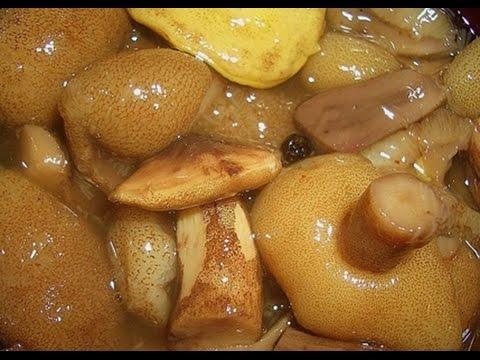
For pickling, the mushrooms after preliminary cleaning should be boiled in salted water. Prepare the marinade separately, for this you need to put on 1 liter of brine:
- 2 tbsp. l. salt;
- 2 tsp vinegar;
- 2 laurel leaves;
- 2 pcs. carnations;
- 5 pieces. allspice;
- 1 tbsp. l. Sahara.
Cooking process:
- Boil water with spices.
- Place the fruits in it and cook for 10 minutes.
- Leave for three days in a cool place.
- After 3 days, cook a new marinade from the same amount of ingredients.
- Strain the finished mushrooms through a colander, rinse, put in jars and pour over a new marinade.
After 2 weeks, the pickled mushrooms will be ready.
Freezing
To freeze the green flywheel, after preliminary boiling, it is enough to let the fruits drain completely in a colander, or put them on a napkin. When the excess moisture is gone, the product is laid out in prepared containers or bags and sent to the freezer.
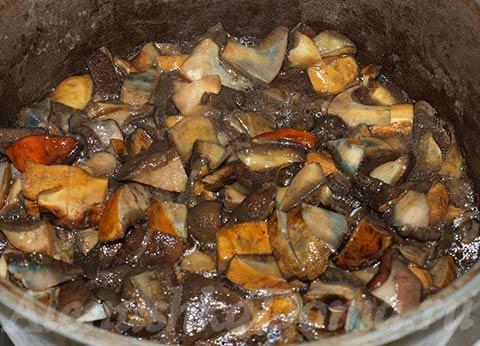 Frying
Frying
Pre-cooked and boiled mushrooms are fried. You can add onions, carrots or sour cream to prepare a delicious dish when frying. They make a wonderful sauce or addition to a side dish.
Salting
After cleaning and boiling the mushrooms, you should let the liquid drain and start putting it in a prepared container, at the bottom of which salt is already poured. For salting, you can use the following spices:
- Dill;
- garlic;
- leaves of currant, cherry, horseradish, laurel;
- cloves;
- allspice peas.
Other seasonings are also used, they are used at will, but you can get by with just one salt. Cooking process:
- The mushrooms are laid in layers, each of which is sprinkled with salt and spicy leaves are laid out.
- From above, cover everything with gauze folded in several layers, press down with a plate on which to place the load.
It will take 40 days to pickle the mushrooms. From time to time, the gauze should be removed and rinsed, or replaced with a new one. Arrange the fruits in jars, pour the resulting brine and put in a cold place (you can roll up).
Drying
It is good to use green mosswheel in a dried form, it makes excellent sauces and soups. The washed and peeled mushrooms are strung on a thread and hung in the sun, if the weather is rainy, then you can use the oven for this purpose.
Canning for the winter
For preservation for the winter, it is best to use only caps of young or middle-aged mushrooms. They should all be checked for rot and worms. For 1 kg of green mushrooms, you will need to boil a liter of water with the addition of:
- 1 tbsp. l. salt;
- 1 PC. laurel;
- 3 allspice peas;
- 3 carnation buds.
After boiling the composition, you need to do the following:
- Dip the fruits into it and cook until all the mushrooms are at the bottom.
- Strain the mushrooms through a colander, rinse under running water, allow time to drain.
- Then you need to lay the caps in layers in a large dish (it is better to use enamel), sprinkling each time with salt and spicy leaves (oak, cherry, horseradish, dill umbrellas).
- You can add garlic, currant leaves, cloves and laurel (to taste) as desired.
- Cover the top with gauze, install the load.
Mushrooms should be salted in a cool place, and after 15 days you can try them or roll them up for the winter. The main storage condition is a cool room.
Conclusion
Flywheels are not the last in the hierarchy of mushroom pickers' preferences. To get the maximum benefit and pleasure from the harvested crop, you should carefully consider their collection and remember the main feature: the false mushroom that is not edible on the cut does not turn blue.
Systematics:
- Department: Basidiomycota (Basidiomycetes)
- Subdivision: Agaricomycotina
- Class: Agaricomycetes (Agaricomycetes)
- Subclass: Agaricomycetidae
- Order: Boletales
- Family: Boletaceae
- Genus: Boletus (Borovik)
- View: Boletus subtomentosus (Green moss)
Synonyms:
Xerocomus subtomentosus
Despite the classic "mossy", so to speak, appearance, this species is currently referred to the genus Borovik (Boletus).
Collection points:
Green moss is found in deciduous, coniferous forests and shrubs, usually in well-lit places (along the sides of paths, ditches, on the edges), sometimes grows on rotten wood, anthills. It settles more often singly, sometimes in groups.
Description:
Hat up to 15 cm in diameter, convex, fleshy, velvety, dry, sometimes with cracks, olive brown or yellowish olive. The tubular layer is adherent or slightly descending to the pedicle. The color is bright yellow, later greenish-yellow with large angular uneven pores, when pressed, they turn bluish-green. The flesh is loose, whitish or light yellow, slightly blue on the cut. Smells like dried fruit.
The leg is up to 12 cm, up to 2 cm thick, thickened at the top, narrowed downward, often curved, solid. The color is yellowish-brown or red-brownish.
Differences:
Green flywheel is similar to and, but differs from them in large pores of the tubular layer. The green flywheel should not be confused with the conditionally edible one, which has a yellowish-red color of the tubular layer and the pungent bitterness of the pulp.
Usage:Green moss is considered an edible mushroom of the 2nd category. For cooking, the whole body of the mushroom is used, consisting of a cap and a leg. Hot dishes are prepared from it without preliminary boiling, but with the obligatory peeling of the skin. Also, the mushroom is salted and pickled for longer storage.
Eating an old mushroom that has begun to break down protein can lead to severe food poisoning. Therefore, only young mushrooms are collected for consumption.
The mushroom is well known both to experienced mushroom pickers and to novice lovers of quiet mushroom hunting. According to its taste, it is highly rated.
This material presents the types of moss that can be found in almost any forest. A photo and description of the mushroom mushrooms are offered, which are accompanied by full botanical characteristics. What edible and inedible varieties of the flywheel have, you can read in the characteristics.
The description of the mushroom mushroom of each variety includes an indication of the possibility / impossibility of eating it.


